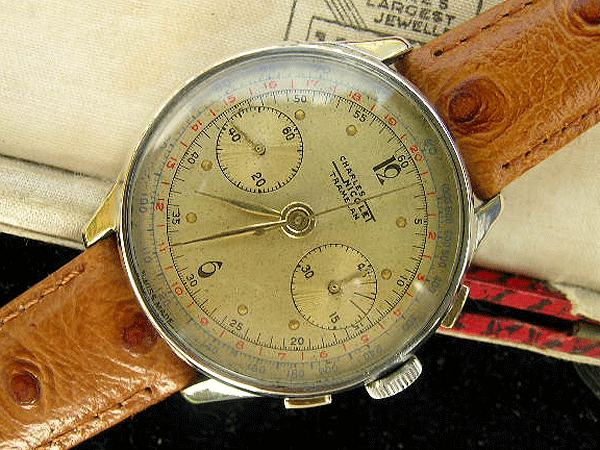Pain and opioid addiction may be further intertwined among persons who have a history of abusing controlled opioid pain medications, such as oxycodone or hydrocodone. A Possible Role on the use of Buprenorphine for the Treatment of Chronic Pain. A History of Pain acknowledges the farreaching influence of this art and addresses its profound role in shaping the public imagination and conceptionas well as misconceptionof modern Chinese history. Pain Doctor was created with one mission in mind: help and educate people about their pain conditions, treatment options and find a doctor who can help end their pain issues. To do that, weve created a mammoth database of painrelated information, and it keeps expanding every day. A Brief History of Pain Treatment. Ancient civilizations recorded on stone tablets accounts of pain and the treatments used: pressure, heat, water, and sun. Early humans related pain to evil, magic, and demons. Relief of pain was the responsibility of sorcerers, shamans, priests, and priestesses, who used herbs, rites, and ceremonies as their. The concept of pain has remained a topic of long debate since its emergence in ancient times. The initial ideas of pain were formulated in both the East and the West before 1800. In the July issue of Practical Pain Management, 1 we covered the history of pain spanning the 17th and 18th centuries. Understanding the history of pain can help practitioners and researchers grasp the nature of pain, and demonstrate how the pain management specialty grew to include the current range of treatment options. Interactive timeline of the history of anesthesia and the profession of anesthesiology. Davy observes As nitrous oxide in its extensive operation appears capable of destroying physical pain, Dr. James Robinson's book A treatise on the inhalation of the vapour of ether for the prevention of pain in surgical operations; The History of. Pain forces sufferers to pay attention to their bodies. The way peopleinpain communicate their suffering has a profound effect on the type and quality of care they receive. The history of pain problems is as long as that of human beings; however, the understanding of pain mechanisms is still far from sufficient. Thus, intensive research is required. This historical review mainly focuses on the development of pain theories and the fundamental discoveries in this field. In the history of modern medicine, the prominence of phrases such as the conquest of pain or the fight against pain imply that the battle has, essentially, been won. The history and evaluation of the adult with hand pain will be reviewed here. The differential diagnosis is lengthy, and this review will focus on some of the more common diagnoses. Thumb and wrist pain, as well as fractures and infections of the hand, are discussed in detail separately. The History of Pain has been included in three large surveys of Hirsts work, The Agony and the Ecstasy, Museo Archeologica Nazionale, Naples, 2004, Requiem, PinchukArtCentre, Kiev, 2009 and Cornucopia, Muse Ocanographique, Monaco, 2010). A History of Pain acknowledges the farreaching influence of this art and addresses its profound role in shaping the public imagination and conceptionas well as misconceptionof modern Chinese history. Early History The father of modern medicine was Hippocrates, who lived sometime between 460 B. Hippocrates left historical records of pain relief treatments that included the use of powder made from the bark and leaves of the willow tree to help heal headaches, pains and fevers. This 83 year old woman with a history of congestive heart failure, and coronary artery disease risk factors of hypertension and postmenopausal state presents with substernal chest pain. The history of pain provides valuable background on the evolution of thinking regarding the neurophysiology of pain. 1, 2 As noted, Charles Sherrington ( ) was the first to introduce the term nociception (activity of receptors and nerve fibers. The problem of pain has likely concerned humankind from the beginning as pain is a compelling call for attention and a signal to escape from its source. Early efforts to understand pain, and its origins, features, and treatment reflected the duality between spiritual conceptualizations of pain and physiological explanations depending on the predominance of such views in a given culture in any. The History of Pain Treatments Fact Sheet PAIN TREATMENTS THROUGH THE AGES Through the ages, the search for pain relief has taken on many variations some bizarre and some worthy of Back pain is a common presenting complaint associated with a wide range of acute and chronic medical conditions. These can vary in severity from minor complaints such as muscular strain to lifethreatening conditions such as a dissecting aortic aneurysm. A BRIEF HISTORY OF PAIN RELIEF IN LABOUR Pain management from the time of recorded history had been crude and largely ineffective. Primitive attempts to help relieve pain were based mainly on suggestion and distraction. By 2050, two thirds of the people in the world will be living in cities. This dramatic influx is putting pressure on urban life, and raising critical questions for the people living through these challenges. History and Etymology for pain Noun Middle English, from AngloFrench peine, from Latin poena, from Greek poin payment, penalty; akin to Greek tinein to pay, tinesthai to punish, Avestan kan revenge, Sanskrit cayate he revenges Taking a comprehensive chest pain history is an important skill that is often assessed in the OSCE setting. Its important to have a systematic approach to ensure you dont miss any key information. The guide below provides a framework to take a thorough chest pain history. The most active substance in opium is morphinenamed after Morpheus, the Greek god of dreams. Morphine is a very powerful painkiller, but it is also very addictive. A bottle of codeine tabletsall opiates temporarily relieve pain but are highly addictive. Pain History and Pain Assessment Th e e ective clinical management of pain ultimately depends on its accurate assessment. Th is entails a comprehensive evaluation of the patients pain, symptoms, functional status, and clinical history in a series of as Roselyne Rey's History of Pain is probably the most comprehensive academic history of all things related to physical pain. Still, Rey's work, originally published in French, is thorough but uses almost exclusively French language resources. Formation Early History of ASPMN The twoday conference provided content on pathophysiology of pain, pain in the home health setting, management of acute exacerbation of pain in the chronic pain patient, cancer pain, empowerment of the bedside nurse as primary pain manager, new approaches in pain management, setting up a pain service, and. The mneomonic 'SOCRATES' can he helpful in remembering the different questions to ask when taking a pain history. SOCRATES The abuse of opioids, including prescription painkillers and drugs like heroin, is something the U. has struggled with for decades. In May 1973, University of Washington anesthesiology professor John J. Bonica convened an interdisciplinary group of pain researchers and clinicians to discuss the need for a professional organization dedicated to pain research and management. An intriguing analysis of the evolving influences of society and culture on pain thresholds throughout the ages. New Scientist This is an interesting and important study. The translation has been well done. Nagato (, Nagato) was a shinobi of Amegakure and descendant of the Uzumaki clan. Forming Akatsuki alongside his friends (and fellow war orphans) Yahiko and Konan, Nagato dreamed of bringing peace to the violent shinobi world. However, following Yahiko's death, Nagato adopted the alias of Pain Family history The current complaint in parents siblings: health, cause of death, age of onset, age of death [eg: heart dz, bowel CA, breast CA. The American contribution to the history of pain relief is as colorful as a patchwork quilt. Quilts from Appalachia incorporated images of medicinal plants in medicine squares, said Cope. Paint is any liquid, liquefiable, or mastic composition that, after application to a substrate in a thin layer, converts to a solid film. It is most commonly used to protect, color, or provide texture to objects. Paint can be made or purchased in many colorsand in many different types, such as watercolor, synthetic, etc. Paint is typically stored, sold, and applied as a liquid, but most. SPECIAL COMMUNICATION A Capsule History of Pain Management Marcia L. Meldrum, PhD P AIN IS THE OLDEST MEDICAL problem and the universal physical affliction of man Opium was known to ancient Greek and Roman physicians as a powerful pain reliever. It was also used to induce sleep and to give relief to the bowels. The Irish Chronic Pain Association was founded in 1992 by a Consultant in Pain Medicine and a small group of his patients. The name was changed in 2009 to Chronic Pain Ireland (CPI). CPI is a registered charity and is run by a committee of volunteers. Nagato Becomes Pain, Obito Kills Old AkatsukiHistory of Akatsuki Episode 1. Pain is a complex clinical problem. Assessment depends on verbal report, and the patient's physical perceptions may be modified by cognitive and affective factors. This article focuses both on the history of how pain has been perceived across time and culture, but also how malleable an individual's perception of pain can be due to factors like situation, their visual perception of the pain, and previous history with pain. Chest pain is an excellent example of when to use the mnemonic SOCRATES: S ite (central or left sided chest pain, retrosternal pain, epigastric pain) O nset (sudden onset, how quickly it progressed, relation to exertion [if related to exertion, is it always related to exertion or occasionally at rest).











